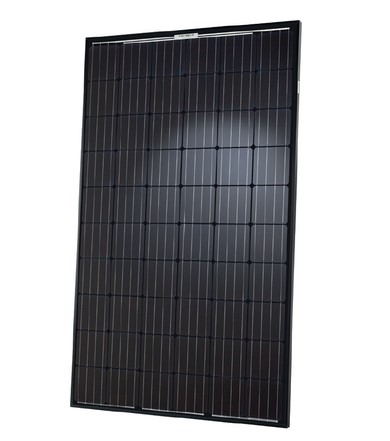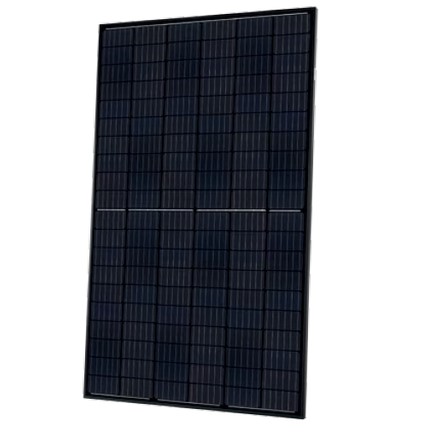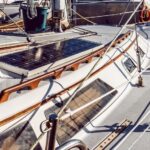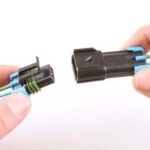Are you on the lookout for solar panels? We hear you. When you are new to a green lifestyle and wish to transition to go solar, it might feel like you are stepping into a foreign land. As you evaluate your options and help you in the right direction, we’ll be telling you all about the sought-after Hanwha solar panels.
Every time more and more people turn to solar panels and see how this change allows them to create a simple, more efficient living space. With this type of energy to power your home, you can enjoy an unlimited power supply, and even if you want a portable option for your RV, you can enjoy most of the comforts of home with the right solar panels.
If you are looking to change solar energy, you may want to invest in a trusted brand that’s well backed up. Putting your money on a brand like Hanwha and doing your research is the right move; after all, you do not want to get into solar energy unprepared. Continue reading and learn what you need to know about Hanwha solar panels.
Hanwha Solar Panels Review FAQs
Are Hanwha solar panels tier 1?
Q CELLS is a Tier 1 solar panel manufacturer that makes high-performance photovoltaic (PV) products for the residential, commercial, and industrial solar energy markets. Its solar panels are near the top of the need for efficiency, performance, and warranty structure, and they are used by installers all over the world.
Are Hanwha Solar panels good?
Its solar panels are near the top of the market for efficiency, performance, and warranty structure, and they are used by installers all over the world.
Are Hanwha Q Cells good?
Q CELLS solar panels may not offer industry-leading efficiency or performance, but their price to quality ratio makes them an excellent value for many homeowners who are considering solar. Overall, there are plenty of compelling reasons to consider Q CELLS panels for your home solar installation.
Where are Hanwha Solar panels made?
Production facilities are located in Qidong in China, Cyberjaya in Malaysia, Eumseong and Jincheon in South Korea, and Dalton, Georgia in the United States.
Does Hanwha make Tesla solar panels?
It still only features the company’s 340-watt solar panel manufacturer by Hanwha Solar. The Tesla module is one of the most potent residential photovoltaic modules available. The system requires up to 20 percent fewer modules to achieve the same power as a standard system.
Is Hanwha Q cell monocrystalline?
Their Q. ANTUM technology is based on PERC cell technology, providing monocrystalline efficiency for multi-crystalline module cells.
How much are Hanwha Q Cells?
An average 5 kW system, gross cost (before you subtract any tax credits or other incentives) would be anywhere from $14,500 to $17,500. With the 30 percent, federal tax credit for solar, a 5 kW system with Hanwha Q CELLS would cost anywhere from $10,325 to $12,320.
How are Hanwha solar panels different from other manufacturers?
Efficiency
- Most solar panels in the industry are between 15 and 20 percent efficient, but solar panel efficiency in commercially-available products can be as high as 22.8%.
- Q CELLS solar panels start at around 20% efficiency with the Q.PEAK DUO-G5 and top out at 20.9% with the Q.PEAK DUO XL-G9, meaning they are high-efficiency solar panels, but not the very highest.
Performance
- Solar panels are designed for an operating temperature of 25° C (77° F). Still, because they are black, the surface of the panels increases in temperature faster than the air around them, especially under the direct sun, which they need for total output. Average solar panel output decreases between 0.3% and 0.5% for each degree Celsius in temperature increase. This decrease in production is known as the temperature coefficient.
- The average Q CELLS solar panel has a temperature coefficient of 0.35%, putting them at the low end of the average range (lower is better). Because all models of Q CELLS solar panels use the same cells, they have nearly identical temperature coefficients across the entire product line.
Warranties
- Every standard and “L” model Q CELLS solar panel comes with a 12-year product warranty and a 25-year linear performance warranty.
- Q CELLS guarantees that their panels will put out no less than 98% of the panel’s rating during the first year and degrade by a maximum of 0.54% per year after that. These warranty periods match the industry’s average Tier 1 solar panel warranties.
Cost
- Recent quotes from solar companies through our solar panel cost calculator show prices between $2.30 and $2.49 per watt. The national average cost of solar panels is $3.00, meaning that solar systems using Q CELLS solar panels are competitive with the rest of the market.
Hanwha Solar Panels Review
Q Cells Technology
The company has dabbled in many different solar cells, from polycrystalline silicon to CIGS thin-film, but they currently only focus on one technology: monocrystalline PERC solar cells.
PERC, which stands for “passivated emitter and rear contact,” is a fancy way to say these solar cells come with an extra layer of conductive material on the backside of the cell, which can be built into a solar panel with a reflective back-sheet to capture a tiny bit of extra energy from photons that would otherwise get reflected into the sky.
Q CELLS calls its PERC implementation “Q.ANTUM DUO.”
Q.ANTUM DUO PERC Technology Explained
As mentioned, Hanwha Q cell panels incorporate Q.ANTUM DUO PERC technology. This technology advancement allows companies to build solar panels that produce more electricity in the same amount of space as less efficient panels.
By incorporating this technology, Hanwha has tackled two common issues: light-induced degradation (LID) and potential induced degradation (PID), which ultimately reduce power output.
The “duo” in Q.ANTUM DUO refers to the newest improvements in Hanwha Q Cells PV modules. Currently, the company cuts each solar cell in half and wires each panel in two halves, two practices with many advantages. Solar panels with half-cut solar cells experience less resistive energy loss, have more area for the PERC layer to grab photons, and have better durability.
As for split-panel design, it prevents energy losses from shading since the section of the panel that does receive sunlight still works to its full potential.
The PERC, which stands for “passivated emitter and rear contact,” refers to the extra layer of conductive material on the backside of the cell. This material captures extra energy.
Q.PEAK DUO Series Modules
The company currently offers five solar modules, all of which are based on Q.ANTUM DUO technology. All Q. PEAK DUO series modules are made with half-cut, monocrystalline silicon PERC cells, with modules wired in the split-panel configuration described above.
All Q. PEAK DUO modules use the same kind of cells; the only differences between the series are slight changes in construction, the number of busbars (tiny wires that connect cells), or the number of cells. The reason any given module offers more wattage than another has more to do with cell matching.
Q CELLS 290W MONO SOLAR PANEL.
With its top performance and utterly black design, the new Q. PEAK BLK-G4.1 is the ideal solution for all residential rooftop applications thanks to its innovative cell technology, Q.ANTUM.
The world-record cell design was developed to achieve the best performance under real conditions, even with low radiation intensity and clear, hot summer days.
Optimal yields, whatever the weather with excellent low-light and temperature behavior. Long-term yield security with Anti-PID Technology, Hot-Spot-Protect, and Traceable Quality Tra. Q.

Features:
- Enduring High Performance
- Extreme Weather Rating
- Maximum Cost Reductions
Q CELLS 310W MONO SOLAR PANEL
The new Q. PEAK DUO-G5 solar module from Q CELLS impresses thanks to innovative Q.ANTUM DUO Technology, which enables exceptionally high performance on a small surface area.
Q.ANTUM’s world-record cell concept has now been combined with state-of-the-art circuitry, half cells, and a six-busbar design, achieving outstanding performance under natural conditions, both with low-intensity solar radiation and hot, clear summer days.
The new Q. PEAK DUO-G5 is a monocrystalline solar module with power classes up to 330 Wp and an efficiency of 19.9 %. Q.PEAK DUO-G5 solar modules offer higher yields over smaller surface areas. This is made possible by the new generation of Q.ANTUM’s world-record-holding cell concept.

Features:
- Q.ANTUM DUO
- Anti LID and Anti PID Technology
- Reliable
Hopefully, our Hanwha Dolar Panel review was helpful for you; per request from some readers and my dear neighbor, we did a Panasonic solar panel review, easy to read and fill with all the questions users are looking for.



